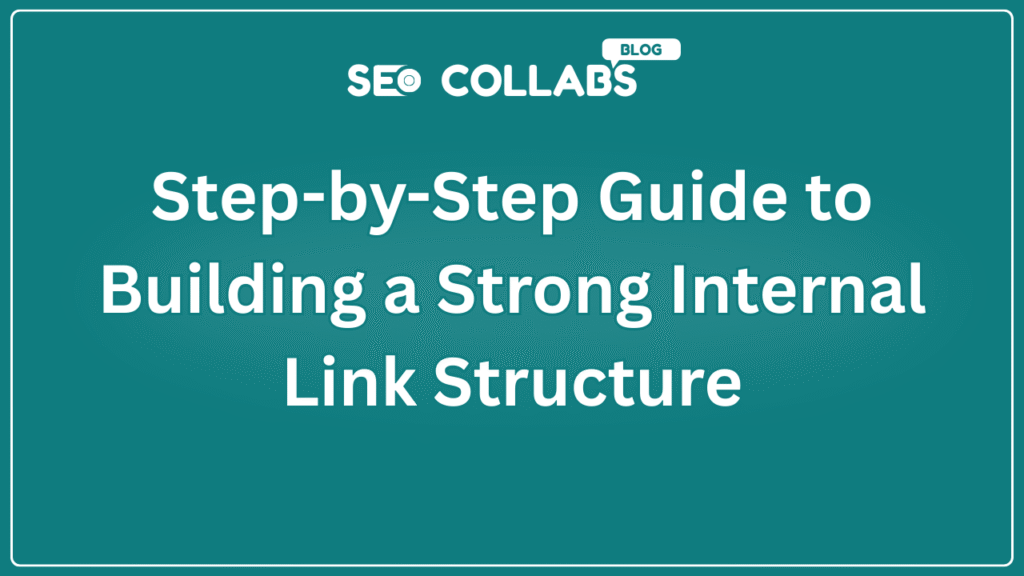Internal linking is the unsung hero of SEO. Done right, it boosts rankings, guides users through your site, and distributes “link equity” like a pro. But done wrong? It’s a maze of broken links and missed opportunities. Whether you’re a blogger, marketer, or business owner, this guide will show you how to build a powerhouse internal link structure—and how tools like SEO Collabs can supercharge your efforts.
Table of Contents
- Why Internal Linking Matters
- Step-by-Step Guide to Building Internal Link Structure
- Common Mistakes to Avoid
- How SEO Collabs Complements Your Internal Linking
- Case Study: Doubling Organic Traffic in 6 Months
- Conclusion
- Why SEO Collabs?
Why Internal Linking Matters
Internal links connect your content, telling search engines:
- What’s important: Highlight key pages (like your cornerstone content).
- How content relates: Show topical relevance (e.g., linking a blog about “SEO tools” to a “keyword research guide”).
- Where users should go next: Improve navigation and reduce bounce rates.
Fun Fact: Websites with strong internal linking rank 40% higher in organic search.
Curious about the difference between internal and external links?
For a deeper dive, check out our detailed guide: Internal vs. External Links: What’s the Real Difference?.
Also Read
Step-by-Step Guide to Building Internal Link Structure
Step 1: Audit Your Existing Content
Before building, know what you’re working with.
Tools to Use:
- Screaming Frog: Crawl your site to find orphaned pages (pages with zero internal links).
- Ahrefs: Check which pages have the most backlinks but lack internal links.
- Google Analytics: Identify high-traffic pages that can pass equity to newer posts.
Pro Tip: Use SEO Collabs to collaborate with your team and organize findings in shared dashboards.
Step 2: Define Your Site Hierarchy
Map your content like a city planner designs roads:
- Cornerstone Content: Pillar pages (e.g., “Ultimate Guide to SEO”).
- Subtopics: Supporting articles (e.g., “How to Do Keyword Research”).
- Deep Content: Niche posts (e.g., “Best SEO Tools for E-commerce”).
Example Structure:
Homepage → SEO Guide → Keyword Research → Long-Tail Keywords
Step 3: Use Keyword-Rich Anchor Text
Anchor text tells search engines (and users) what to expect.
Best Practices:
- Be Descriptive: Use phrases like “learn about on-page SEO” instead of “click here.”
- Avoid Over-Optimization: Keep exact-match keywords under 10% of anchors.
- Prioritize Relevance: Link to pages that add value to the reader.
Bad Example: “Check out this link about SEO.”
Good Example: “Optimize your on-page SEO with these tips.”
Step 4: Link Deep, Not Just to the Homepage
Spread equity beyond your homepage:
- Link to category pages, blog posts, and product pages.
- Use contextual links in the body content, not just menus/footers.
Case Study: A travel blog increased time-on-page by 25% by linking deep content like “Packing Tips” within destination guides.
Step 5: Create Content Clusters
Group related content to boost topical authority:
- Identify a Core Topic: E.g., “Content Marketing.”
- Link Supporting Content: Articles like “How to Write Blog Posts” or “SEO Copywriting Tips.”
- Use a Hub-and-Spoke Model: Link all spokes back to the hub (pillar page).
SEO Collabs Integration: Collaborate with writers via SEO Collabs to create cluster content, then link them strategically.
Step 6: Fix Broken Links
Broken internal links frustrate users and waste crawl budget.
Tools to Help:
- Ahrefs Site Audit: Flag 404 errors.
- Google Search Console: Check “Coverage” reports for crawl issues.
Step 7: Add Links to New & Old Content
- New Posts: Link to 3–5 relevant existing pages.
- Old Posts: Update them with links to newer content (e.g., “As mentioned in our 2024 SEO trends report…”).
Pro Tip: Use SEO Collabs’ Content Calendar to schedule internal linking updates alongside guest post collaborations.
Step 8: Use Tools to Automate & Track
- Yoast SEO: Suggests internal links as you write.
- Link Whisper: Automatically recommends relevant links.
- Google Analytics: Track user flow to refine your structure.
Common Mistakes to Avoid
- Overlinking: Too many links dilute equity. Aim for 2–5 per page.
- Ignoring Mobile Users: Ensure links are easy to tap on mobile.
- Forgetting User Intent: Links should guide users, not just please algorithms.
How SEO Collabs Complements Your Internal Linking
While SEO Collabs is known for external link-building, it’s also a secret weapon for internal linking:
- Collaborate on Content: Work with experts to create pillar posts and cluster content.
- Track Performance: Use shared dashboards to monitor which linked pages drive traffic.
- Stay Organized: Manage internal linking workflows alongside guest post campaigns.
Case Study: Doubling Organic Traffic in 6 Months
A SaaS company used this process:
- Audited content with Screaming Frog.
- Built clusters around “CRM Software” (pillar) and “Email Automation” (subtopic).
- Collaborated via SEO Collabs to create guest posts, then linked them internally.
Result: Organic traffic grew by 110%, with 30% higher engagement.
Conclusion
A strong internal link structure isn’t just about SEO—it’s about creating a seamless journey for users and search engines. You’ll boost rankings, engagement, and conversions by following these steps and leveraging tools like SEO Collabs.

Ready to Supercharge Your Strategy?
👉 Try SEO Collabs to streamline content collaboration and link-building—inside and outside your site.
Why SEO Collabs?
- Collaborate Efficiently: Connect with writers, designers, and SEOs to build link-worthy content.
- Track Everything: Monitor internal and external links in one place.
- Stay Penalty-Free: Ensure every link aligns with Google’s guidelines.




